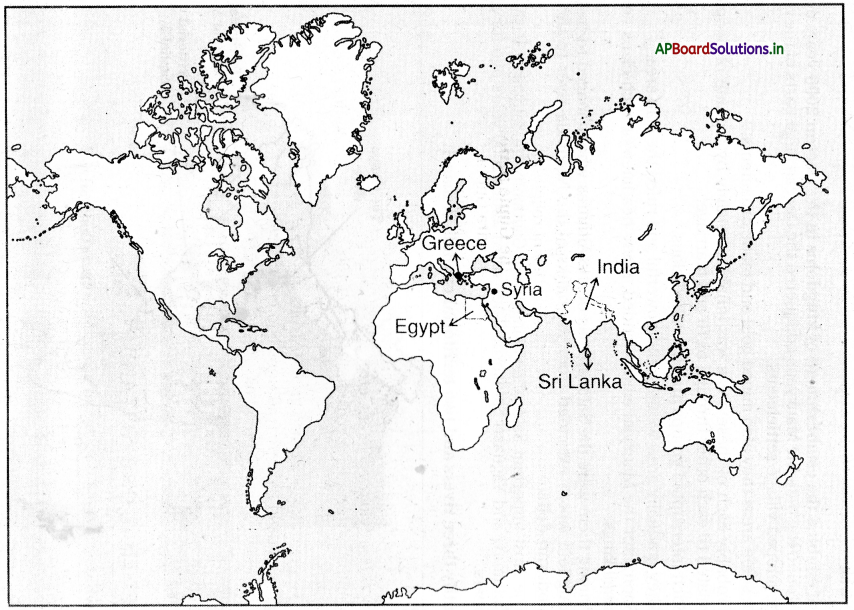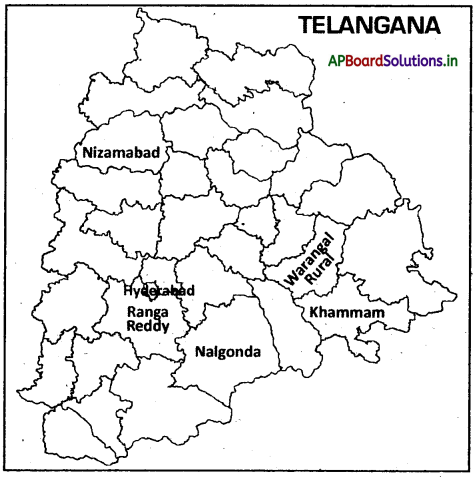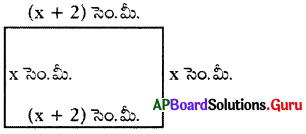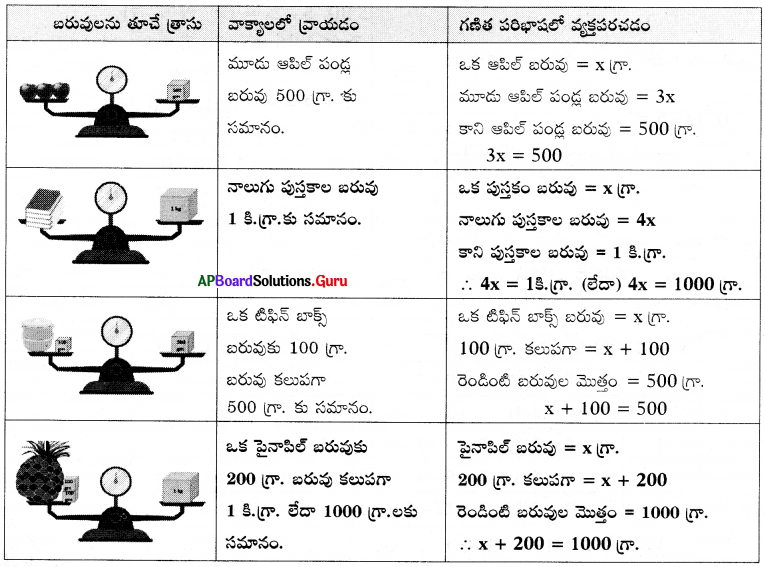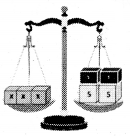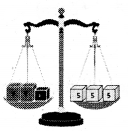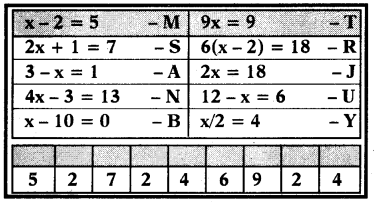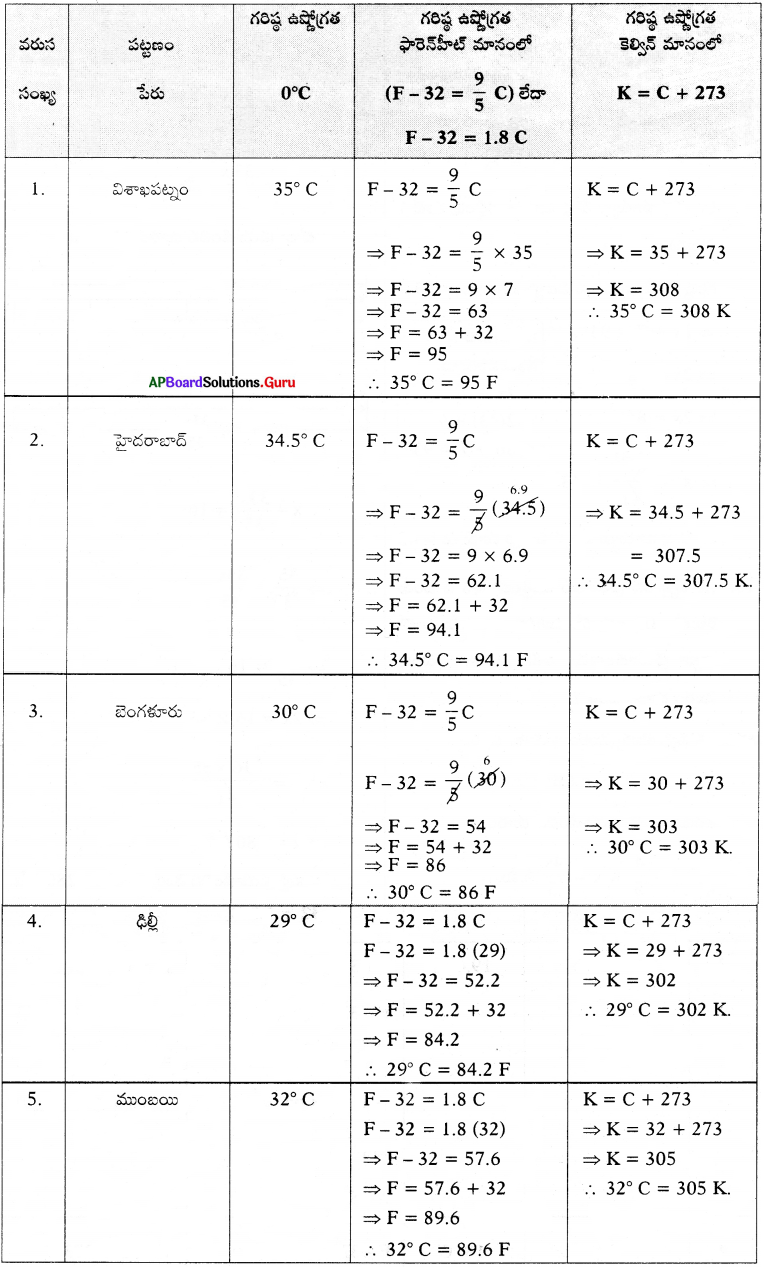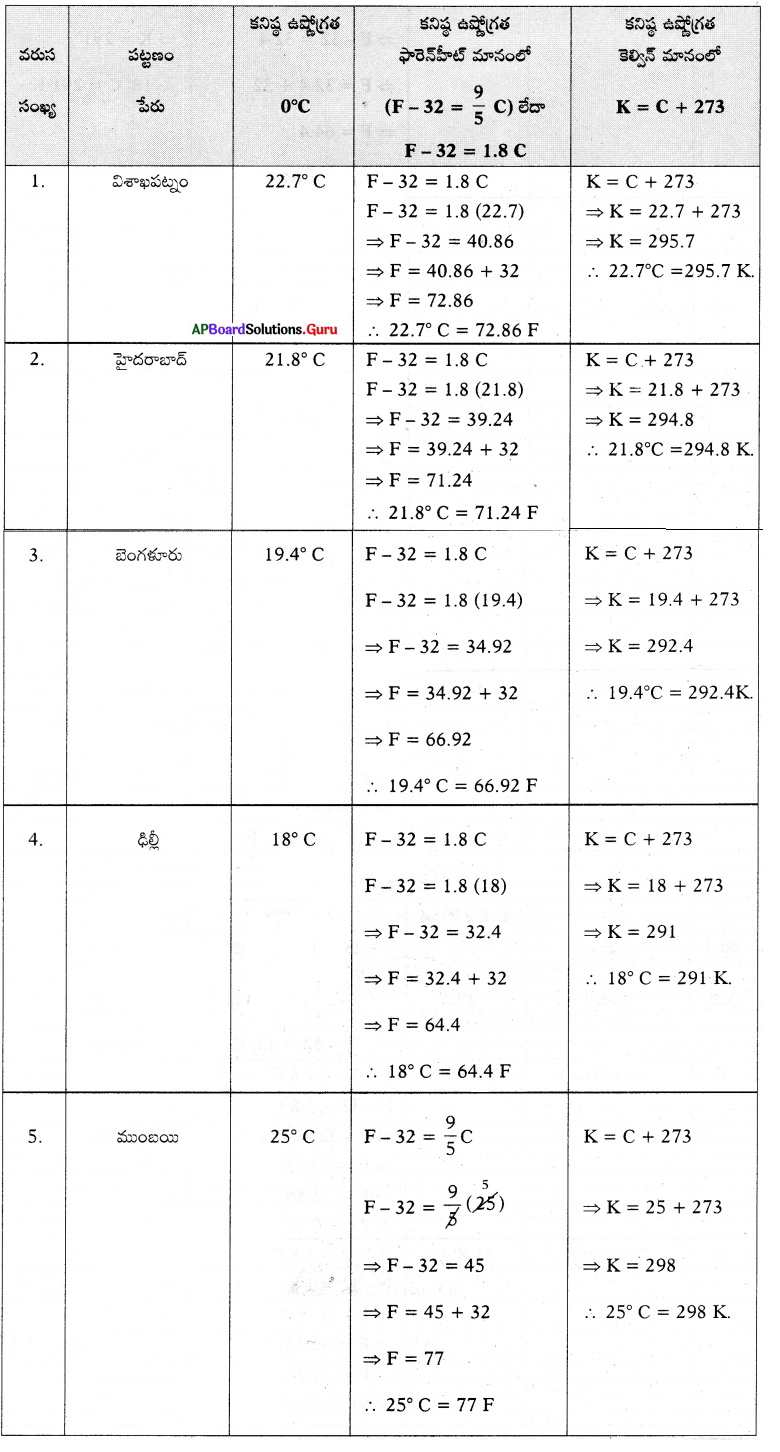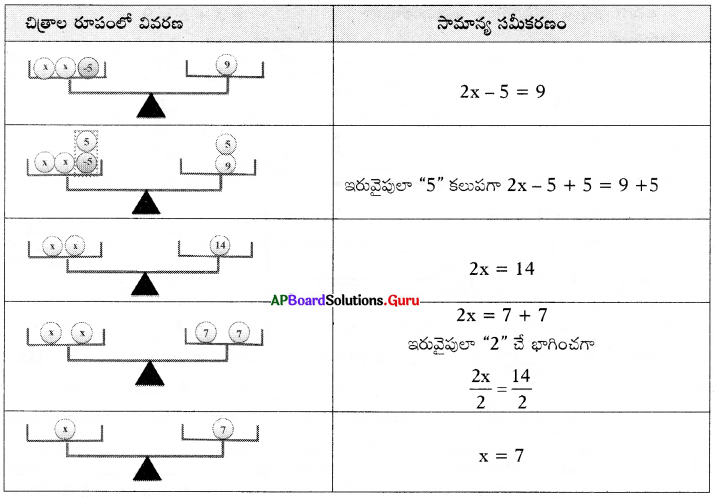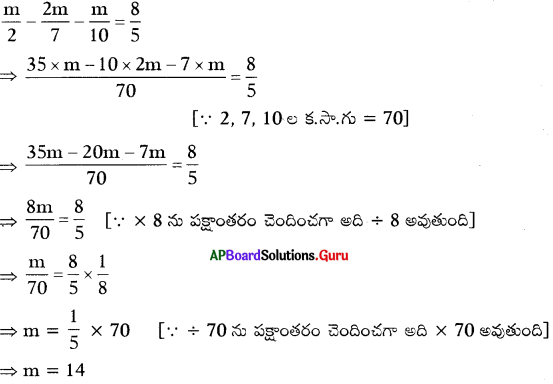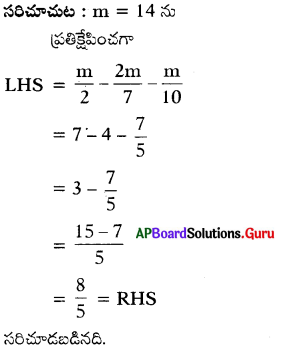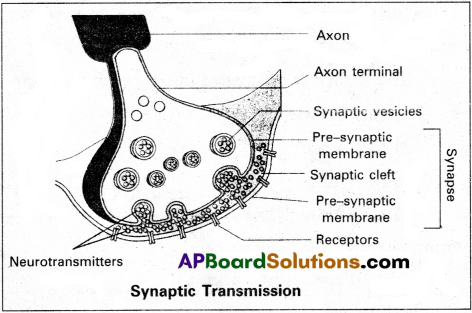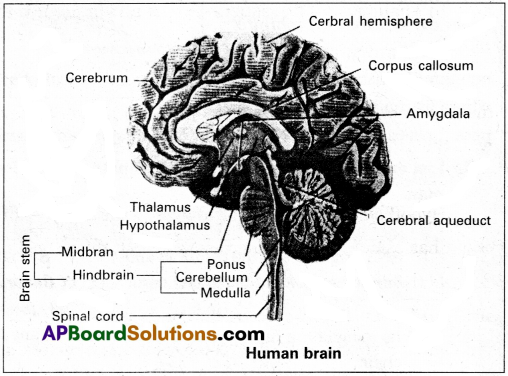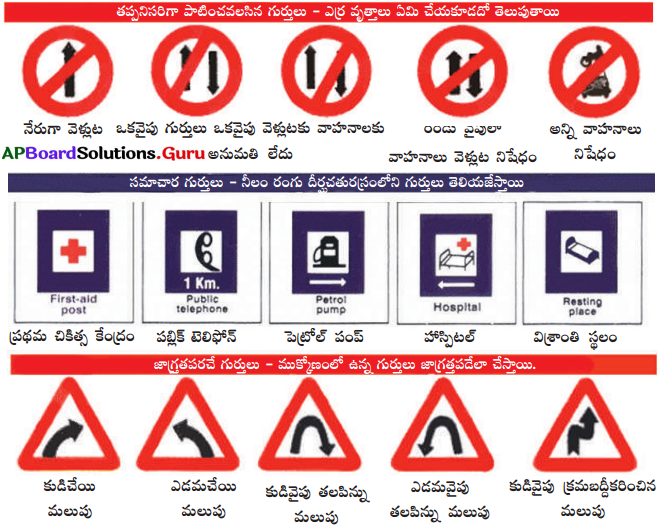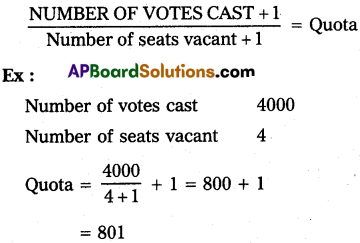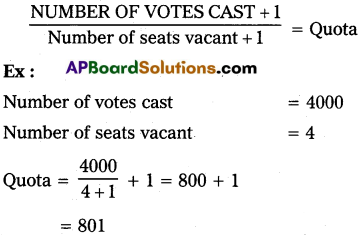SCERT AP 10th Class Social Study Material Pdf 19th Lesson రాజకీయ ధోరణుల ఆవిర్భావం : 1977-2000 Textbook Questions and Answers.
AP State Syllabus 10th Class Social Solutions 19th Lesson రాజకీయ ధోరణుల ఆవిర్భావం : 1977-2000
10th Class Social Studies 19th Lesson రాజకీయ ధోరణుల ఆవిర్భావం : 1977-2000 Textbook Questions and Answers
Improve your learning (మీ అభ్యసనాన్ని మెరుగుపడుచుకోండి)
ప్రశ్న 1.
కింది వాటిని జతపరచండి : (AS1)
| 1) సరళీకృత ఆర్థిక విధానం | a) విదేశీ దిగుమతులపై పన్నుల మీద పరిమితులు |
| 2) ఇష్టమొచ్చినట్లు తొలగించటం | b) కేంద్ర ప్రభుత్వం ద్వారా రాష్ట్ర ప్రభుత్వాలు |
| 3) ఇతరుల తొలగింపు | c) తమ కంటే భిన్నంగా ఉన్న ప్రజలకు |
| 4) సమాఖ్య సిద్ధాంతం | d) రాష్ట్ర ప్రభుత్వాలకు మరింత స్వయం ప్రతిపత్తి |
జవాబు:
| 1) సరళీకృత ఆర్థిక విధానం | a) విదేశీ దిగుమతులపై పన్నుల మీద పరిమితులు |
| 2) ఇష్టమొచ్చినట్లు తొలగించటం | b) కేంద్ర ప్రభుత్వం ద్వారా రాష్ట్ర ప్రభుత్వాలు |
| 3) ఇతరుల తొలగింపు | c) తమ కంటే భిన్నంగా ఉన్న ప్రజలకు |
| 4) సమాఖ్య సిద్ధాంతం | d) రాష్ట్ర ప్రభుత్వాలకు మరింత స్వయం ప్రతిపత్తి |
ప్రశ్న 2.
స్వాతంత్ర్యానంతర రెండవ దశలో పార్టీ వ్యవస్థలో ప్రధాన మార్పులను గుర్తించండి. (AS1)
జవాబు:
- 1976-85 మధ్యకాలం భారతదేశ ప్రజాస్వామ్యానికి పరీక్షాకాలం వంటిది.
- మౌలిక ప్రజాస్వామిక హక్కులను తిరస్కరించిన అత్యవసర పరిస్థితితో మొదలై, రాజీవ్ గాంధీ నేతృత్వంలో కాంగ్రెస్ పార్టీ చారిత్రాత్మక ఎన్నికల విజయంతో ముగిసింది.
- ఈ కాలం కాంగ్రెస్ పార్టీ పాలనతోనే మొదలై ముగిసినప్పటికీ కేంద్రంలోనూ, రాష్ట్రాలలోనూ కాంగ్రెస్ కి ప్రత్యామ్నాయాలు రూపొందాయి.
- ఈ కాలం భారతదేశం ఏకపార్టీ ప్రజాస్వామ్యంలోకి జారిపోకుండా సమర్థవంతంగా నివారించింది.
- పోటీదారు ప్రత్యామ్నాయాలు ఏర్పడటంతో భారతీయ ఓటర్లకు ఎంచుకోవటానికి అవకాశం లభించింది.
- దీనివల్ల రాష్ట్ర జాతీయస్థాయి రాజకీయాలలో విభిన్న రాజకీయ దృక్పథాలకు, వర్గ ప్రయోజనాలకు అవకాశం లభించింది.
- సోషలిస్టులు, హిందూ జాతీయతావాదులు, కమ్యూనిస్టుల వంటి రాజకీయ దృక్పథాలు, రైతులు, దళితులు, వెనుకబడిన కులాలు, ప్రాంతాల వంటి వర్గ ప్రయోజనాలు కూడా ముందుకు వచ్చి తమ హక్కుల కోసం పోరాడసాగారు.
- ఇదే సమయంలో పర్యావరణ ఉద్యమం, స్త్రీవాద ఉద్యమం, పౌరహక్కుల ఉద్యమం, సాహిత్య ఉద్యమం వంటి ఉద్యమాలు మొదలై సామాజిక మార్పునకు బలమైన చోదకశక్తులుగా మారాయి.
- రాజకీయ పార్టీలు మారిన పరిస్థితులకనుగుణంగా తమ మ్యానిఫెస్టోలను మార్చుకోవలసి వచ్చింది.
![]()
ప్రశ్న 3.
కేంద్ర, రాష్ట్ర స్థాయిలలో వివిధ ప్రభుత్వాల ప్రధాన ఆర్థిక విధానాలలో వేటిని గురించి ఈ అధ్యాయంలోనూ, ఇంతకు ముందు అధ్యాయాలలోనూ చర్చించారు ? వాటిల్లో పోలికలు, తేడాలు ఏమిటి? (AS1)
జవాబు:
పోలికలు:
- హరిత విప్లవాన్ని రాష్ట్రాల సహకారంతో కేంద్రం అమలుచేసింది.
- వి.పి.సింగ్ ప్రభుత్వం ప్రకటించిన ‘ఓబిసి’లకు రిజర్వేషన్లు అప్పటికే అనేక రాష్ట్రాలలో అమలు చేస్తున్నారు.
కేంద్ర, రాష్ట్ర స్థాయిలలో వివిధ ప్రభుత్వాల ఆర్థిక విధానాల మధ్య తేడాలు :
| కేంద్రస్థాయి ఆర్థిక విధానాలు | రాష్ట్రస్థాయి ఆర్థిక విధానాలు |
| 1. ప్రణాళికాబద్ధ అభివృద్ధి ద్వారా కులం, మతం, ప్రాంతం వంటి విభజన ధోరణులు తగ్గి భారతదేశం బలమైన దేశంగా ఎదుగుతుందని భావించి నెహ్రూ ప్రణాళికా సంఘాన్ని ఏర్పాటు చేశాడు. మొదటి పంచవర్ష ప్రణాళిక వ్యవసాయానికి ప్రాధాన్యతనిచ్చింది. | 1. పశ్చిమబెంగాల్ : 1977లో సిపిఎంకి చెందిన “జ్యోతిబసు” ప్రభుత్వం ఏర్పడింది. ఈ ప్రభుత్వం రాష్ట్రంలో అసంపూర్తిగా ఉన్న భూసంస్కరణలను చేపట్టింది. ఎ) 1978 లో పశ్చిమ బెంగాల్ లో కౌలుదార్ల పేర్లను నమోదుచేసింది. బి) వాళ్ల హక్కులను కాపాడటానికి “ఆపరేషన్ బర్గా” ను చేపట్టింది. (కౌలుదార్లను బెంగాలీలో బర్గాదార్లు అంటారు.) సి) ఆపరేషన్ బర్గా ఫలితంగా కౌలుదార్లను భూస్వాములు బలవంతంగా తొలగించటానికి వీలులేకుండా పోయింది. డి) కౌలుదార్ల హక్కును వారసత్వం చేసి అది కొనసాగేలా చూశారు. ఇ) పంటలో, పెట్టుబడి కౌలుదారు పెడితే 75%, భూస్వామి పెడితే 50% కౌలుదారుకి దక్కేలా ప్రభుత్వం చూస్తుంది. |
| 2. నెహ్రూ భూసంస్కరణలు, వ్యవసాయ సహకార సంఘాలు, స్థానిక స్వపరిపాలన అనే మూడు రకాల భూసంస్కరణలను ప్రతిపాదించారు. | |
| 3. జమీందారీ వ్యవస్థ రద్దు, కౌలు విధానాల సంస్కరణ, భూపరిమితి విధానాలను నెహ్రూ ప్రవేశపెట్టారు. | |
| 4. 1964-67 మధ్య ఆహార ఉత్పత్తిని పెంచడానికి ‘హరిత విప్లవం’ను మొదలు పెట్టారు. | |
| 5. 1971 తరువాత ఇంధిరాగాంధీ ప్రైవేటు బ్యాంకులను జాతీయం చేసింది. రాజభరణాలను రద్దు చేసింది. | |
| 6. 1985లో రాజీవ్ గాంధీ ప్రభుత్వం సరళీకృత విధానాలవైపు మొగ్గు చూపింది. | 2. ఆంధ్రప్రదేశ్ : 1982 లో ఆంధ్రప్రదేశ్ లో “నందమూరి తారక రామారావు” నాయకత్వంలో తెలుగుదేశం పార్టీ ప్రభుత్వాన్ని ఏర్పాటు చేసింది. చిన్న వర్గ ప్రజలను ఆకర్షించడానికి కొన్ని సంక్షేమ పథకాలను ప్రకటించింది. ఎ) రెండు రూపాయలకు బియ్యం బి) ప్రభుత్వ పాఠశాలలో మధ్యాహ్న భోజన పథకం సి) మద్యపాన నిషేధం. డి) పేదవారికి, రైతులకు బ్యాంకుల ద్వారా రుణాలు |
| 7. వెనుకబడిన తరగతుల ప్రజలకి కూడా అవకాశాలు కల్పించుటకై ‘పి సింగ్’ ప్రభుత్వం, ప్రభుత్వ ఉద్యోగాలలోను, విద్యాసదుపాయాలలోను రిజర్వేషన్లు ప్రకటించింది. అనేక సమస్యలను ఎదుర్కొన్నది. | |
| 8. తీవ్ర ఆర్థిక సంక్షోభాన్ని అధిగమించడానికి 1992లో పి.వి. నరసింహారావు’ ప్రభుత్వం అంతర్జాతీయ ద్రవ్య నిధితో సంప్రదింపులు నిర్వహించింది. అది కొన్ని తీవ్ర షరతులతో భారతదేశం సరళీకృత ఆర్థిక విధానాలను అవలంభించేలా చేసింది. | |
| 9. దీనివల్ల విదేశీ కంపెనీలు భారతదేశంలో పరిశ్రమలను నెలకొల్పాయి. వ్యాపారాలు మొదలు పెట్టాయి. స్వదేశీ కర్మాగారాలు మూతపడ్డాయి. | |
| 10. భారతదేశం ప్రపంచ మార్కెట్ లోకి లాగబడింది. విద్య, ఆరోగ్యం, రవాణా వంటి అనేక ప్రభుత్వ సదుపాయాలు ప్రైవేటీకరణకు దారితీశాయి. |
ప్రశ్న 4.
ప్రాంతీయ ఆకాంక్షలు ప్రాంతీయ పార్టీల ఏర్పాటుకు ఎలా దారితీశాయి ? రెండు దశలలోని పోలికలు, తేడాలను వివరించండి. (AS1)
జవాబు:
ప్రాంతీయ ఆకాంక్షల ఆవిర్భావం :
1) భారతదేశంలోని విభిన్న ప్రాంతాల్లో మరింత స్వయం ప్రతిపత్తి కోసం విభిన్న ఉద్యమాలు జరిగాయి.
2) ఆంధ్రప్రదేశ్ :
ఆంధ్రప్రదేశ్ లో ముఖ్యమంత్రులను కేంద్ర కాంగ్రెస్ నాయకత్వం తరచు మారుస్తుండటం, పై నుంచి నాయకులను రుద్దటం ఇక్కడి ప్రజలకు నచ్చలేదు.
- జాతీయ కాంగ్రెస్ నాయకత్వం నుంచి ఆంధ్రప్రదేశ్ నాయకత్వానికి తగినంత గౌరవం లభించటం లేదని బావించసాగారు.
- తెలుగు ప్రజల ఆత్మగౌరవానికి అవమానం జరిగిందని భావించసాగారు.
3) అసోం :
స్వయం ప్రతిపత్తికి ఇదోరకమైన బలమైన ఉద్యమం.
- బ్రిటిష్ పాలన నాటి నుండి రాష్ట్ర పాలనలోని కింది, మధ్య స్థాయి ఉద్యోగాలలో బెంగాలీలు ఉండేవారు.
- బెంగాలీ అధికారులు తమని సమానులుగా కాకుండా 2వ తరగతి పౌరులుగా చూస్తున్నారని అస్సోమీయులు భావించేవారు.
- స్వాతంత్ర్యం తరువాత బెంగాలీ మాట్లాడే ప్రజలు పెద్ద సంఖ్యలో అసోంలో సిరపడసాగారు.
- ఇవన్నీ చాలవన్నట్లు సరిహద్దు ఆవల బంగ్లాదేశ్ నుంచి ఎంతోమంది వలస రాసాగారు.
- దీంతో స్థానిక ప్రజలు తమ సాంస్కృతిక మూలాలు కోల్పోతామనీ, బయటివాళ్ళు ఎక్కువై తమ జనాభా తగ్గుతుందనీ భయపడసాగారు.
4) పంజాబ్ :
ఇక్కడ అత్యధిక శాతం ప్రజలు మాట్లాడే భాష, మతము ఆధారంగా ప్రజల సమీకరణ జరిగింది.
- దేశాభివృద్ధిలో రాష్ట్రం పాత్రను విస్మరిస్తున్నారన్నదే పంజాబ్ ఆరోపణ.
- రాష్ట్రం ఏర్పడినపుడు వారికి అన్యాయం జరిగిందని, రాజధాని ప్రాంతం చండీగఢ్ కేంద్రపాలిత ప్రాంతంగా కాక తమకే చెందాలనీ, భాక్రానంగల్ ఆనకట్ట నుంచి ఎక్కువ నీళ్ళు కావాలనీ, సైన్యంలోకి ఎక్కువమంది సిక్కులను తీసుకోవాలని కోరారు.
పోలికలు :
- తమ ఉనికిని గుర్తించాలనీ
- తమకు స్వయం ప్రతిపత్తి కల్పించాలనీ
- తమ జాతిమీద వేరొకరి ప్రభావం ఉండకూడదనీ
- తమకు అన్ని అవకాశాలు కల్పించాలనీ
తేడాలు:
- ఆంధ్రప్రదేశ్ లో తమ జాతి అవమానించబడుతోందనీ
- అసోంలో తమ సాంస్కృతిక మూలాలు కోల్పోతామనీ, తమ జనాభా తగ్గిపోతుందనీ
- పంజాబ్ లో తమకే మేలు జరగాలనీ ప్రాంతీయ ఉద్యమాలు వచ్చాయి.
![]()
ప్రశ్న 5.
ప్రభుత్వాన్ని ఏర్పాటు చెయ్యాలంటే రాజకీయ పార్టీలు సమాజంలోని భిన్న వర్గాల ప్రజలను ఆకర్షించాలి. స్వాతంత్ర్యానంతర రెండవ దశలో ఈ పనిని వివిధ రాజకీయ పార్టీలు ఎలా చేశాయి? (AS1)
జవాబు:
- ప్రభుత్వాన్ని ఏర్పాటు చేయాలంటే రాజకీయ పార్టీలు సమాజంలోని భిన్న వర్గాల ప్రజలను ఆకర్షించాలి.
- స్వాతంత్ర్యానంతర రెండవ దశలో ఈ పనిని అన్ని రాజకీయ పార్టీలు అవలంబిస్తున్నాయి.
- సమాజంలోని రైతులు, దళితులు, వెనుకబడిన కులాలు, ప్రాంతాల వంటి వర్గ ప్రయోజనాలను కాపాడవలసిన అనసరం ఏర్పడింది.
- వారి అవసరాలను తీర్చటానికి ప్రభుత్వాలు అనేక సంక్షేమ కార్యక్రమాలను ఏర్పాటుచేయడం జరిగింది.
- పర్యావరణాన్ని పరిరక్షించే చర్యలు.
- స్త్రీ ప్రాధాన్యతను పెంచే చర్యలు.
- పౌరహక్కుల పరిరక్షణ కొరకు అనేక చర్యలు.
- సాహిత్యాన్ని రక్షించుటకు కొన్ని చర్యలను చేపట్టడం జరిగింది.
- పై చర్యలను చేపట్టడానికి, ఓటర్లను ఆకర్షించడానికి రాజకీయ పార్టీలు పోటీపడుతున్నాయి.
ప్రశ్న 6.
భారతీయ పరిపాలనా విధానంలో అందరినీ కలుపుకునే స్వభావం బలహీన పడటానికి కారణమైన పరిణామాలు ఏమిటి? వివిధ ప్రజలను, రాజకీయ ఆకాంక్షలను కలుపుకుని వెళ్లగల సామర్థ్యం ఏ విధంగా దెబ్బతింటోంది? (AS1)
జవాబు:
భారతీయ పరిపాలనా విధానంలో అందరినీ కలుపుకునే స్వభావం బలహీన పడటానికి కారణమైన పరిణామాలు :
- అనేక ప్రజా ఉద్యమాలు చెలరేగడం
- సంకీర్ణ ప్రభుత్వాలు ఏర్పడటం
- సమాఖ్య వ్యవస్థను దెబ్బతీయాలని అనుకోవడం
- వేర్పాటువాదం తలెత్తడం
- ప్రాంతీయ, భాషా మతాభిమానాలు పెరిగిపోవడం
- సమర్థవంతమైన నాయకత్వం లోపించడం
- ప్రజల మనోభావాలను సంతృప్తి పరచలేకపోవడం
- విభిన్న భావాలు గల రాజకీయ నాయకులు సంతృప్తి పడకపోవడం
వివిధ ప్రజలను, రాజకీయ ఆకాంక్షలను కలుపుకుని వెళ్లగల సామర్థ్యం ఏ విధంగా దెబ్బతింటుంది అనగా –
- వివిధ ప్రజలకు, ప్రాంతాలకు ప్రాతినిధ్యం వహించే ప్రాంతీయ పార్టీలు ఆవిర్భవించడం
- వారి ప్రాంతీయ ప్రయోజనాలకు అధిక ప్రాధాన్యత ఇవ్వడం
- ప్రాంతీయ, కుల, మత ప్రయోజనాలను రెచ్చగొట్టి అత్యధికంగా ఓట్లు పొందాలని చూడటం
- స్వలాభం కొరకు జాతీయాభిమానాన్ని తాకట్టుపెట్టడం
- రాజకీయ ప్రయోజనాలతో సమాజ ప్రయోజనాలను దెబ్బతీయడం వంటి అంశాల వల్ల వివిధ ప్రజలను, రాజకీయ ఆకాంక్షలను కలుపుకుని వెళ్లగల సామర్థ్యం దెబ్బతింటోంది.
ప్రశ్న 7.
వివిధ ప్రాంతీయ ఆకాంక్షలు సాంస్కృతిక, ఆర్థిక కోణాలను ఏ విధంగా ఉపయోగించుకుంటాయి? (AS1)
జవాబు:
వివిధ ప్రాంతీయ ఆకాంక్షలు సాంస్కృతిక, ఆర్థిక కోణాలను కింది విధంగా ఉపయోగించుకుంటాయి.
- సంస్కృతిని, సంప్రదాయాలను పెంపొందిస్తాయి. వాటికి ప్రాధాన్యతను ఇస్తాయి.
2 - భాషాభిమానాన్ని కలిగి ఉండి భాషాభివృద్ధికి దోహదం చేస్తాయి.
ఉదా : ఆంధ్రప్రదేశ్ లో తెలుగు ప్రజల ఆత్మగౌరవానికి అవమానం జరిగిందని భావించిన ఎన్.టి. రామారావు ప్రాంతీయ పార్టీని స్థాపించాడు. - అంతేకాక పేదలకు రెండు రూపాయలకు కిలో బియ్యం, ప్రభుత్వ పాఠశాలల్లో మధ్యాహ్న భోజన పథకం, మద్యపాన నిషేధం వంటి ఆర్థిక సంక్షేమ పథకాలకు ప్రాధాన్యం ఇచ్చారు.
- అసోంలోని వ్యాపారం, ఇతర సంస్థలు అస్సోమేతర ప్రజల చేతుల్లో ఉన్నాయని, వాటిని ఇతరుల నుండి తొలగించి తమకు చెందేలా చేసుకోవాలని అసోం ప్రజలు భావించారు.
- అలాగే పంజాబ్ ప్రజలు రాజధాని నగరమైన చండీగఢ్ కేంద్రపాలిత ప్రాంతంగా కాక తమ రాష్ట్రానికే చెందాలనీ, భాక్రానంగల్ ఆనకట్ట నుంచి ఎక్కువ నీళ్ళు కావాలని, సైన్యంలోకి ఎక్కువ మంది సిక్కులను తీసుకోవాలని కోరడం మొదలగునవి ప్రాంతీయ పార్టీల ఆవిర్భావానికి దోహదం చేశాయి.
ప్రశ్న 8.
భారతదేశానికి స్వాతంత్ర్యం వచ్చిన తరువాత తొలి సగంలో ప్రణాళికాబద్ధ అభివృద్ధికి ప్రాధాన్యతనిచ్చారు. రెండవ సగంలో సరళీకృత ఆర్థిక విధానానికి ప్రాధాన్యతను ఇచ్చారు. ఇవి రాజకీయ భావాలను ఎలా ప్రతిబింబించాయో చర్చించండి. (AS1)
జవాబు:
భారతదేశానికి స్వాతంత్ర్యం వచ్చిన తరువాత తొలి సగంలో ప్రణాళికాబద్ధ అభివృద్ధికి ప్రాధాన్యత ఇవ్వడానికి, రెండవ సగంలో సరళీకృత ఆర్థిక విధానానికి ప్రాధాన్యత ఇవ్వడానికి ప్రధాన కారణాలు :
- స్వాతంత్ర్యం వచ్చిన ప్రారంభంలో భారతదేశంలో పేదరికాన్ని తొలగించడానికి బ్రిటిష్ వారు ప్రవేశపెట్టిన వలస ఆర్థిక విధానం నుండి మన ఆర్థిక వ్యవస్థను రూపొందించుటకు ప్రణాళికాబద్ద ఆర్థికవ్యవస్థను ప్రవేశపెట్టారు.
- వ్యవసాయ రంగాన్ని, పారిశ్రామిక రంగాన్ని, సేవారంగాలను అంచెలంచెలుగా అభివృద్ధి చేయడానికి ప్రణాళికలను అమలుచేశారు.
- సుస్థిరంగా, సమర్ధవంతంగా, వేగవంతంగా అభివృద్ధికి సంబంధించిన ప్రణాళికలను రూపొందించారు.
- అయితే వాటి వలన ప్రభుత్వ వ్యయం విపరీతంగా పెరిగిపోవడం వలన రెండవ సగంలో సరళీకృత ఆర్థిక విధానాన్ని అవలంబించారు. ఈ విధానం వలన –
i) ప్రభుత్వ ఖర్చును తగ్గించుకోవటం అనగా రైతులకు ఇచ్చే సబ్సిడీలలో కోత, ప్రజాసేవలు, ఆరోగ్యం వంటి వాటిల్లో ప్రభుత్వ ఖర్చును తగ్గించటం.
ii) విదేశీ పెట్టుబడులపై పరిమితులను తగ్గించుకోవటం.
iii) విదేశీ సరుకుల దిగుమతుల మీద పరిమితులను, పన్నులను తగ్గించటం.
iv) ఆర్థికరంగంలోని అనేక రంగాలలో ప్రైవేటు పెట్టుబడిదారులకు అవకాశం కల్పించటం వంటి చర్యల ద్వారా భారత ఆర్థిక వ్యవస్థను మెరుగుపరచడం జరిగింది.
![]()
ప్రశ్న 9.
సంకీర్ణ ప్రభుత్వం వల్ల విధానాలలో మధ్యేమార్గాన్ని అవలంబించటానికి సంకీర్ణ ప్రభుత్వంలోని వివిధ రాజకీయ పార్టీలు తమ ప్రాంతీయ కోరికలను సాధించుకునే విధానానికి ఉదాహరణలను వార్తాపత్రికలు, వార పత్రికలు చదవటం ద్వారా గుర్తించండి. (AS3)
జవాబు:
- 1990ల కాలంలో స్వాతంత్ర్యానంతర భారతదేశంలో చాలా కీలకమైన మార్పులు చోటుచేసుకున్నాయి.
- పోటీతో కూడిన బహుళపార్టీ వ్యవస్థకు మార్పుతో మెజారిటీ స్థానాలు గెలిచి సొంతంగా ప్రభుత్వాన్ని ఏర్పాటుచేసే స్థితి ఏ ఒక్క పార్టీకీ లేదు.
- 1989 నుంచి జాతీయస్థాయిలో ఏర్పడిన ప్రభుత్వాలన్నీ సంకీర్ణ మైనారిటీ ప్రభుత్వాలే.
- కేంద్రంలో ప్రభుత్వాన్ని ఏర్పాటు చెయ్యడానికి అనేక జాతీయ, ప్రాంతీయ పార్టీలు కలవవలసి వచ్చింది.
- అలాంటి సమయంలో ప్రాంతీయ పార్టీలు ఆయా ప్రాంతాలకు, ప్రజలకు అద్దంపడుతూ వాటి అభివృద్ధికి కృషిచేయడం జరుగుతుంది.
10th Class Social Studies 19th Lesson రాజకీయ ధోరణుల ఆవిర్భావం : 1977-2000 InText Questions and Answers
10th Class Social Textbook Page No.272
ప్రశ్న 1.
ఈ రెండు సమస్యలతో ప్రభుత్వం వ్యవహరించిన తీరు మన ప్రజాస్వామిక రాజతంత్రాన్ని బలపరిచిందా, బలహీన పరిచిందా?
జవాబు:
ఈ రెండు సమస్యలు చాలా జటిలమై, ప్రభుత్వానికే సవాల్ గా నిలిచాయి. అయినప్పటికి ఈ సమస్యలలో ప్రభుత్వం వ్యవహరించిన తీరు వలన ప్రజాస్వామిక రాజతంత్రాన్ని బలపరచిందనే చెప్పాలి.
10th Class Social Textbook Page No.274
ప్రశ్న 2.
ప్రధానమంత్రి క్షమాపణ
| రాజ్యసభలో డా|| మన్మో హన్ సింగ్ ప్రకటన – ………… 1984లో జరిగిన ఈ మహా జాతీయ విపతులో నాలుగు వేలమంది చంపబడ్డారు. ఒకే దేశంగా కలిసి పనిచేస్తున్న సందర్భంలో ఇటువంటి ఘోర విషాదాలు దేశంలో తిరిగి ఎన్నడూ జరగకుండా కొత్త దారులు కనుక్కోటానికి ప్రయత్నించాలి. ……. ఒక్క సిక్కు ప్రజలకే కాకుండా మొత్తం భారతదేశానికి క్షమాపణలు చెప్పటానికి నేను తటపటాయించను, ఎందుకంటే 1984లో జరిగింది మన రాజ్యాంగంలో పొందుపరిచిన దానికి, జాలి అన్న భావనకు పూర్తి వ్యతిరేకమయినది. మా ప్రభుత్వం తరపున, ప్రజలందరి తరపున ఇటువంటి ఘటన జరిగినందుకు నేను సిగ్గుతో తల వంచుకుంటున్నాను. అయితే దేశ వ్యవహారాల్లో శిఖరాలూ ఉంటాయి, లోయలు ఉంటాయి. గతం మనతో ఉంది, దానిని తిరగరాయలేం. కానీ మానవులుగా మనందరికీ మెరుగైన భవిష్యత్తును రూపొందించగల సామర్థ్యం , దృఢ చిత్తత మనకి ఉన్నాయి. (pmindia mic co/Rs%20 speech.pdf) – 2005 ఆగస్టు 11. |
పై సమాచారాన్ని చదివి క్రింది ప్రశ్నలకు జవాబులు వ్రాయండి.
1) ఈ ఉపన్యాసంలోని ప్రధాన సందేశం ఏమిటి?
జవాబు:
- 1984లో జరిగిన ఘోర విషాదాలు దేశంలో తిరిగి ఎన్నడూ జరగకుండా కొత్త దారులు కనుక్కోటానికి ప్రయత్నించాలి.
- 1984లో జరిగిన ఘోరానికి నేను క్షమాపణ తెలియచేస్తున్నాను అని మన్మోహన్ సింగ్ ప్రకటించారు.
2) ఈ ఉపన్యాసం ఏ సంకేతాలను పంపిస్తోంది?
జవాబు:
- దేశ వ్యవహారాలలో శిఖరాలు ఉంటాయి, లోయలు ఉంటాయి. కొన్నిసార్లు కొన్ని రకాలైన పనులు చేయవలసి వస్తుంది.
- గతాన్ని తిరగ రాయలేం. కానీ మానవులం కనుక మెరుగైన భవిష్యత్తును రూపొందించగల సామర్థ్యం, దృఢ చిత్తం మనకున్నాయని సంకేతాలిస్తుంది.
3) ప్రధానమంత్రి ఈ ఉపన్యాసం చెయ్యటంలోని ప్రాముఖ్యత ఏమిటి?
జవాబు:
- 1984లో జరిగినది మన రాజ్యాంగంలో పొందుపరచిన దానికి, జాతి అన్న భావనకు పూర్తి వ్యతిరేకమయినది.
- మా ప్రభుత్వం తరుపున, ప్రజల తరుపున ఇటువంటి ఘటన జరిగినందుకు నేను సిగ్గుపడుతున్నానని తెలియచేశారు.
10th Class Social Textbook Page No.265
ప్రశ్న 3.
పలు పార్టీల ప్రజాస్వామ్యంతో పోలిస్తే ‘ఏక పార్టీ ప్రజాస్వామ్యం’ మెరుగైన ప్రత్యామ్నాయంగా ఉండేదా?
జవాబు:
పలు పార్టీల ప్రజాస్వామ్యంతో పోలిస్తే ఏక పార్టీ ప్రజాస్వామ్యం మెరుగైన ప్రత్యామ్నాయంగా ఉండేది కాదు.
ఎందుకనగా:
- ఏకపార్టీ ప్రజాస్వామ్యం వలన నియంతృత్వ ధోరణి పెరుగుతుంది.
- మార్పులకు అవకాశం ఉండదు.
- అందరి క్షేమానికి అవకాశం ఉండేది కాదు.
- ఉద్యమాలు తలెత్తవు. ఉద్యమాలు తలెత్తకపోతే భిన్నాభిప్రాయాలకు ప్రభుత్వంలో భాగస్వామ్యం ఉండదు.
![]()
10th Class Social Textbook Page No.270
ప్రశ్న 4.
ప్రజలు స్వేచ్ఛగా సంచరించే విధానం ఉంటే బయటి నుంచి వచ్చిన ధనిక, శక్తిమంతులైన వాళ్ళు భూమి, వనరులు మొత్తాన్ని కొనేసి అసలు ఆ ప్రాంతంలోని వాళ్లను పేదలు, నిర్భాగ్యులుగా మిగులుస్తారా?
జవాబు:
మిగల్చరు. కారణం భూమి, వనరులు అమ్మితే కొంటారు కాని అమ్మకపోతే కొనరు కదా. ఒకవేళ అమ్మినా ఎక్కువ రేటు వస్తుంది. దానితో పేదవారు ధనికులు కావడానికి అవకాశం ఉంటుంది. మరియు ధనికులు వచ్చి అక్కడ పరిశ్రమల లాంటివి స్థాపించితే దానిలో ఉపాధి లభిస్తుంది. కాబట్టి అక్కడ పేదలు నిర్భాగ్యులుగా మిగలరు.
10th Class Social Textbook Page No.273
ప్రశ్న 5.
ఇప్పుడు వెనక్కి తిరిగి చూస్తే రాజీవ్ గాంధీ దేశానికి ఒనగూర్చిన శాశ్వత ప్రయోజనాలు ఏమిటి?
జవాబు:
- శాంతి ప్రక్రియలు మొదలు పెట్టారు.
- పేదవారికి ఉద్దేశించిన పథకాలను వారికి అందేటట్లు ఏర్పాట్లు చేశారు.
- అధికార వికేంద్రీకరణకు రాజ్యాంగం ద్వారా చట్టబద్ధత కల్పించారు.
- ఆర్థిక రంగంలో సరళీకృత ఆర్థికవ్యవస్థను ప్రవేశపెట్టారు.
- సాంకేతిక విజ్ఞానాన్ని భారతదేశం అవలంబించాలని ‘టెలికం విప్లవం’ ఆరంభించారు.
10th Class Social Textbook Page No.273
ప్రశ్న 6.
తమకోసం ఉద్దేశించిన పథకాల వల్ల పేద ప్రజలు తరచు ఎందుకు ప్రయోజనం పొందటం లేదో తరగతిలో చర్చించండి. ఇటువంటి ప్రయోజనాలు నిజంగా పేదవాళ్లకు చేరాలంటే ఏ దీర్ఘకాల చర్యలు తీసుకోవాలి?
జవాబు:
- ప్రభుత్వ శాఖలలో పేరుకుపోయిన అవినీతి
- ప్రజలు నిరక్షరాస్యత మూలంగా ప్రభుత్వం తమకోసం చేపట్టిన పథకాలను పొందలేకపోతున్నారు.
- అమాయకత్వం వలన కూడా పేదప్రజలు ప్రయోజనం పొందటం లేదు.
తీసుకోవాల్సిన దీర్ఘకాల చర్యలు:
- అక్షరాస్యతను పెంచాలి.
- ప్రభుత్వ పథకాల గురించి ప్రజలకు తెలిసేలా చేయాలి.
- ప్రభుత్వోద్యోగులు నిజాయితీతో పనిచేస్తూ ఈ పథకాలు ప్రజలకు అందేలా చర్యలు తీసుకోవాలి.
10th Class Social Textbook Page No.273
ప్రశ్న 7.
మీ పాఠశాల విద్యార్థులకు అందవలసిన ప్రయోజనాల జాబితా తయారుచెయ్యండి. ఇవి వాళ్లకు సరిగా అందుతున్నాయా? తరగతి గదిలోనూ, బయట క్రీడా మైదానాలలోనూ, ఇంటివద్ద చర్చించండి.
జవాబు:
పాఠశాల విద్యార్థులకు అందవలసిన ప్రయోజనాలు :
- మధ్యాహ్న భోజన పథకం
- ఉచిత పుస్తకాల పంపిణీ
- ఉచిత యూనిఫారం
- స్కాలర్షిప్లు
- లైబ్రరరి సౌకర్యాలు
- ఆటస్థలం
- ప్రయోగశాలలు
వీటన్నింటినీ విద్యార్ధులు పొందేలా చర్యలు తీసుకోవాలి. వీటి మీద విద్యార్ధులకు అవగాహన కలిగించాలి.
![]()
10th Class Social Textbook Page No.264
ప్రశ్న 8.
గత అధ్యాయంలో చర్చించిన స్వతంత్ర భారతదేశంలోని రాజకీయ ఘటనల గురించి క్లుప్తంగా రాయండి.
జవాబు:
స్వతంత్ర భారతదేశంలో రాజకీయ ఘటనలు :
- 1952, 1957, 1962లలో జరిగిన ఎన్నికలలో భారత జాతీయ కాంగ్రెస్ అఖండ విజయాలు సాధించింది. ఏకపార్టీ ఆధిపత్యం కొనసాగింది.
- భాషా ప్రాతిపదికన రాష్ట్రాల ఏర్పాటు కొరకు అనేక ఉద్యమాలు ఆవిర్భవించాయి. చివరికి 1956లో భాషాప్రాతిపదిక రాష్ట్రాలు ఏర్పడ్డాయి.
- ప్రచ్ఛన్న యుద్ధం మొదలయ్యి ప్రపంచమంతా రష్యా కూటమి (USSR) లేదా అమెరికా కూటమి (USA) గా విడిపోయింది. ఇటువంటి నేపథ్యంలో నెహ్రూ, మన దేశం ఈ రెండు శిబిరాలలో చేరకుండా విదేశీ విధానంలో స్వతంత్రంగా ఉంటూ, అలీన విధానమును మన విదేశీ విధానంగా స్వీకరించారు.
- చైనాతో నెహ్రూ పంచశీల సూత్రాల ఒప్పందం చేసుకున్నాడు.
- 1962లో చైనాతో మన దేశం యుద్ధం చేయవలసి వచ్చింది.
- 1965లో భారతదేశం పాకిస్థాన్తో యుద్ధం చేసింది.
- జాతీయ భాష అయిన హిందీకి వ్యతిరేకంగా తమిళనాడులో ఉద్యమం జరిగింది.
- 1967 ఎన్నికలలో కాంగ్రెస్ ఘోర పరాజయానికి గురైంది. అనేక రాష్ట్రాల్లో కాంగ్రెస్ ఓడిపోయి, ప్రాంతీయ పార్టీలు ప్రభుత్వాలను ఏర్పాటు చేశాయి.
- 1969లో మేఘాలయ రాష్ట్రం ఏర్పడింది.
- దేశంలోని చాలా రాష్ట్రాలలో అనేకాంశాల మీద ఉద్యమాలు లేచాయి.
- 1971లో బంగ్లాదేశ్ స్వతంత్ర పోరాటంలో భారత్- పాకిస్తాన్ తో ప్రత్యక్ష యుద్ధానికి దిగింది. బంగ్లాదేశ్ స్వాతంత్ర్యం పొందింది.
- 1971 ఎన్నికలలో కాంగ్రెస్ ఘన విజయం సాధించింది.
- 1973లో అరబ్- ఇజ్రాయిల్ మధ్య యుద్ధంతో చమురు ధరలు పెరగడంతో ద్రవ్యోల్బణం పెరిగింది.
- జయప్రకాశ్ నారాయణ్ నేతృత్వంలో ఐక్యమైన ప్రతిపక్షాలు దేశంలోని పలు ప్రాంతాలలో కాంగ్రెస్ కి, ఇందిరాగాంధీకి వ్యతిరేకంగా ఉద్యమించాయి. ఈ ఉద్యమం తీవ్రతరం కావడంతో ప్రభుత్వం దేశంలో “అత్యవసర పరిస్థితి”ని విధించింది.
10th Class Social Textbook Page No.265
ప్రశ్న 9.
నిరసన, మార్పులకు సంబంధించి సామాజిక ఉద్యమాలకు అనువైన పరిస్థితులను పలు పార్టీల ప్రజాస్వామ్యం ఎలా దోహదం చేస్తుంది?
జవాబు:
- పోటీదారు ప్రత్యామ్నాయాలు ఏర్పడటంతో భారతీయ ఓటర్లకు ఎంచుకోటానికి అవకాశం లభించింది.
- దీనివల్ల రాష్ట్రస్థాయి, జాతీయస్థాయి రాజకీయాలలో విభిన్న రాజకీయ దృక్పథాలకు, వర్గ ప్రయోజనాలకు అవకాశం లభించింది.
- సోషలిస్టులు, హిందూ జాతీయతావాదులు, కమ్యూనిస్టుల వంటి రాజకీయ దృక్పథాలు, రైతులు, దళితులు, వెనుకబడిన కులాలు, ప్రాంతాల వంటి వర్గప్రయోజనాలు కూడా ముందుకొచ్చి తమ హక్కుల కోసం పోరాడసాగారు.
- ఈ సమయంలో పర్యావరణ ఉద్యమం, స్త్రీవాద ఉద్యమం, పౌరహక్కుల ఉద్యమం, సాహిత్య ఉద్యమం వంటి ఉద్యమాలు మొదలై సామాజిక మార్పునకు బలమైన చోదకశక్తిగా మారాయి.
10th Class Social Textbook Page No.267
ప్రశ్న 10.
రాష్ట్రాలలో వేరే రాజకీయ పార్టీలకు చెందిన ప్రభుత్వాలు ఉన్నప్పుడు కేంద్రప్రభుత్వం వాటిని తొలగించిన సందర్భాలు అనేకం ఉన్నాయి. ప్రజాస్వామిక సూత్రాలకు ఇది ఎలా భంగం కలిగిస్తోందో చర్చించండి.
జవాబు:
- ప్రపంచంలోనే విశాలమైన ప్రజాస్వామ్య దేశం భారతదేశం. ప్రజలచే ప్రత్యక్షంగా ఎన్నుకోబడిన ప్రభుత్వాలను తొలగించడమనేది ప్రజాస్వామ్య మౌలిక సూత్రాలకు విరుద్ధం.
- జనతాపార్టీ, కాంగ్రెస్ ప్రభుత్వాలు తీసుకున్న చర్యలు సమాఖ్య సూత్రాలను బలహీనపరచి, అధికార కేంద్రీకరణకు మద్దతునిచ్చాయి.
- ప్రజాస్వామ్యాన్ని, స్వేచ్ఛని పునరుద్ధరిస్తామన్న వాగ్దానంతో జనతాపార్టీ అధికారంలోకి వచ్చి, ప్రజాస్వామ్యాన్ని, స్వేచ్ఛని నామరూపాల్లేకుండా చేసింది.
- ఇటువంటి చర్యలు కేంద్రం యొక్క ఆధికత్యను తెలుపుతూ, ప్రాథమిక హక్కులను భంగకరమవుతాయి.
- ఇటువంటి చర్యలు కొనసాగుతూనే ఉన్నట్లయితే భారతదేశం ఏకకేంద్ర రాజ్యంగా మారిపోతుంది.
10th Class Social Textbook Page No.268
ప్రశ్న 11.
ఎన్.టి.ఆర్ రాజకీయాలలో ఈ దిగువ అంశాల ప్రాముఖ్యతను చర్చించండి.
i) సినీ హీరోగా ఉన్న నేపథ్యం
ii) రాష్ట్ర ఆత్మగౌరవం కోసం పోరాటం
iii) పేదలకు జనాకర్షక సంక్షేమ పథకాలు
iv) ఇతర ప్రాంతీయ పార్టీలతో సంబంధాలు
జవాబు:
i) సినీ హీరోగా ఉన్న నేపథ్యం :
ఎన్.టి.ఆర్ తెలుగు సినిమారంగంలో అనేక జానపద, పౌరాణిక, సాంఘిక చిత్రాలలో నటించి తన నటనా శైలితో అశేష ఆంధ్ర ప్రజానీకాన్ని మెప్పించి, వారి అభిమాన నటుడై, ఆదరాభిమానాలు పొందాడు.
ii) రాష్ట్ర ఆత్మగౌరవం కోసం పోరాటం:
- ఎన్.టి.ఆర్ ఆంధ్రప్రదేశ్ లో ముఖ్యమంత్రులను కేంద్ర కాంగ్రెస్ నాయకత్వం తరచూ మారుస్తుండటం చూశారు.
- పై నుంచి నాయకులను రుద్దటం ఇక్కడి ప్రజలకు నచ్చలేదు.
- జాతీయ కాంగ్రెస్ నాయకత్వం నుంచి ఆంధ్రప్రదేశ్ నాయకత్వానికి తగినంత గౌరవం లభించటం లేదని భావించసాగారు.
- తెలుగు ప్రజల ఆత్మగౌరవానికి అవమానం జరిగిందని భావించసాగారు.
- తెలుగువారి ఆత్మగౌరవం కోసం తె.దే.పా కృషి చేస్తుందని ఆయన చెప్పారు.
iii) పేదలకు జనాకర్షక సంక్షేమ పథకాలు :
తెలుగుదేశం పార్టీ చేపట్టిన సంక్షేమ పథకాలు :
- పేదలకు రెండు రూపాయలకు కిలో బియ్యం.
- ప్రభుత్వ పాఠశాలల్లో మధ్యాహ్న భోజన పథకం.
- మద్యపాన నిషేధం.
iv) ఇతర ప్రాంతీయ పార్టీలతో సంబంధాలు :
- 1984లో ఆపరేషన్ కోసమని అమెరికాకు వెళ్ళినప్పుడు గవర్నర్ ఆయన ప్రభుత్వాన్ని బర్తరఫ్ చేశారు.
- తె.దే.పా నుంచి కాంగ్రెస్ కి పార్టీ ఫిరాయించిన ఎన్. భాస్కరరావుని ముఖ్యమంత్రిగా గవర్నర్ ఆహ్వానించారు.
- అమెరికా నుంచి తిరిగి వచ్చిన ఎన్.టి.ఆర్ గవర్నర్ చర్యను సవాలుచేస్తూ శాసనసభ్యులలో మెజారిటీ మద్దతు తనకే ఉందని నిరూపించారు.
- తన ప్రభుత్వాన్ని అకారణంగా తొలగించటంపై చేసిన పోరాటంలో ఎన్.టి.ఆర్ కి ఇతర రాష్ట్రాలలో అధికారంలో ఉన్న సిపిఐ(ఎం), డి.ఎం.కె., ఎస్.ఎ.డి., నేషనల్ కాన్ఫరెన్స్ వంటి అనేక పార్టీలు మద్దతు నిచ్చాయి.
10th Class Social Textbook Page No.270
ప్రశ్న 12.
ఆంధ్రప్రదేశ్ లో ఎన్.టి.ఆర్ ఉద్యమానికి, అసోం ఉద్యమానికి పోలికలు, తేడాలు ఏవి?
జవాబు:
ఆంధ్రప్రదేశ్ లో ఎన్.టి.ఆర్ ఉద్యమానికి, అసోం ఉద్యమానికి పోలికలు :
- స్వయం ప్రతిపత్తి కావాలని కోరుకోవడం.
- ఆత్మ గౌరవాన్ని పరిరక్షించుకోవడం.
తేడాలు:
- తెలుగు ప్రజలు తమ ఆత్మగౌరవానికి అవమానం జరిగిందని భావించారు.
- అసోం ప్రజలు తమ సాంస్కృతిక మూలాలు కోల్పోతామనీ, బయటివాళ్ళు ఎక్కువైపోయి జనాభాలో తమ సంఖ్య తగ్గుతుందని భయపడసాగారు.
- ఆంధ్రప్రదేశ్ ఉద్యమంలో ఆర్థిక కోణం లేదు. అసోం ఉద్యమంలో ఆర్థిక కోణం కలదు.
- ఆంధ్రప్రదేశ్ ఉద్యమంలో మతపరమైన అంశం లేదు. అసోం ఉద్యమంలో మతపరమైన అంశం కలదు.
- ఆంధ్రప్రదేశ్ ఉద్యమంలో భారతదేశ వ్యతిరేకత లేదు. అసోం ఉద్యమంలో భారతదేశ వ్యతిరేకత వచ్చింది.
![]()
10th Class Social Textbook Page No.270
ప్రశ్న 13.
ఈ అంశాలపై మీ తరగతిలో చర్చ నిర్వహించండి.
ఒక ప్రాంతంలో ఒక సమూహానికి చెందిన ప్రజలు ఉండాలి, అన్ని ఉద్యోగాలు, అన్ని వ్యాపారాలు ఆ సమూహానికి చెందిన ప్రజల చేతిలోనే ఉండాలి. లేదా భారతదేశ ప్రజలందరూ ఒక ప్రాంతం నుంచి మరొక ప్రాంతానికి స్వేచ్ఛగా వెళ్ళగలగాలి. తాము ఎంచుకున్న ప్రాంతంలో స్థిరపడటానికి, పని చెయ్యటానికి అవకాశం ఉండాలి.
జవాబు:
ఒక ప్రాంతంలో ఒకే సమూహానికి చెందిన ప్రజలు ఉండాలి అనేది అంత సమర్థనీయం కాదు. ఎందువల్ల అనగా భారతదేశం ఏక పౌరసత్వ విధానాన్ని అనుసరిస్తుంది కాబట్టి, మరియు ఆర్టికల్ 19 ప్రకారం ఆరు రకాల స్వేచ్చలు ఉన్నాయి కాబట్టి అందులో ఒకటి ఏ భారతీయుడైనా భారతదేశంలో ఎక్కడైనా స్వేచ్ఛగా జీవించవచ్చు.
ఉద్యోగ, ఉపాధి అవకాశాలలో స్థానికతకు కొంత ప్రాధాన్యత ఇచ్చినా వ్యాపారం విషయంలో, ఒక ప్రాంతం నుంచి మరొక ప్రాంతానికి స్వేచ్ఛగా వెళ్ళే విషయంలో, తాము ఎంచుకున్న ప్రాంతంలో స్థిరపడే విషయంలో, పనిచేసే విషయంలో పూర్తి స్వేచ్ఛ ఉండాలి.
10th Class Social Textbook Page No.272
ప్రశ్న 14.
సిక్కుల వేర్పాటువాదం, తీవ్రవాదాలను ప్రేరేపించటంలో 1984 లో ఢిల్లీలో చోటుచేసుకున్న సిక్కు వ్యతిరేక అల్లర్ల పాత్ర ఏమిటి?
జవాబు:
- పంజాబ్ రాష్ట్రంలో స్వయం ప్రతిపత్తికి ఒక ఉద్యమం రూపుదిద్దుకుంది.
- ఇక్కడ అత్యధిక శాతం ప్రజలు మాట్లాడే భాష, మతమూ ఆధారంగా ప్రజల సమీకరణ జరిగింది.
- రాజధాని నగరమైన చండీగఢ్ తమకే చెందాలని, భాక్రానంగల్ నుంచి ఎక్కువ నీరు రావాలని, సైన్యంలోకి ఎక్కువ మంది సిక్కులను తీసుకోవాలని కోరారు.
- 1980లో అకాలీ ప్రభుత్వాన్ని రద్దుచేసి తిరిగి కాంగ్రెస్ ప్రభుత్వం రావటంతో సిక్కులు వివక్షతకు గురవుతున్నారన్న భావన పెరిగింది.
- తీవ్రవాద సిక్కుల బృందానికి నాయకుడిగా ఉన్న భింద్రేన్ వాలా వేర్పాటువాదాన్ని ప్రచారం చేస్తూ సిక్కులకు ప్రత్యేక దేశం ఖలిస్తాన్ కావాలని కోరసాగాడు.
- తీవ్రవాదులు సిక్కుల మీదే కాకుండా పంజాబ్ లోని ఇతర మత ప్రజలపై కూడా సంప్రదాయ ఛాందసవాద జీవన విధానాన్ని అమలు చేయడానికి ప్రయత్నించారు.
- ఈ ఘర్షణ మతపరమైన రంగును కూడా సంతరించుకుంది.
- సిక్కు మతానికి చెందని ప్రజలపై దాడులు జరిగాయి.
- వీటన్నింటి అంతిమ పర్యవసానంగా సిక్కు వేర్పాటు బృందాలు సిక్కుల పవిత్ర స్థలమైన గోల్డెన్ టెంపుల్ ని అక్రమించుకోగా వాళ్ళని అక్కడ నుంచి ఖాళీ చేయటానికి సైన్వం జోక్యం చేసుకోవలసి వచ్చింది.
- దీంతో తమ పుణ్యస్థలం అపవిత్రమైందని సిక్కులు భావించటంతో వాళ్ల విజాతి భావం మరింత తీవ్రమైంది.
- వీటన్నింటి కారణంగా 1984లో ప్రధానమంత్రి ఇందిరాగాంధీ హత్యకు గురయ్యింది.
- దీని తరువాత అల్లర్లు చెలరేగి, ప్రత్యేకించి ఢిల్లీలో వేలాదిమంది సిక్కులపై దాడులు చేసి, వాళ్ళ ఆస్తులను విధ్వంసం చేసి, హత్య చేశారు.
- ఈ హింసను ఆపటానికి పాలనాయంత్రాంగం స్పందించినట్లు అనిపించలేదు.
- రాజీవ్ గాంధీ ప్రధానమంత్రి అయ్యాక కొంత శాంతి చర్చలు ప్రారంభమయ్యాయి.
10th Class Social Textbook Page No.272
ప్రశ్న 15.
అసోం, పంజాబ్ ఉద్యమాల మధ్య పోలికలు, తేడాలను పేర్కొనండి. మన రాజకీయ వ్యవస్థకు అవి ఎటువంటి సవాళ్లను విసిరాయి?
జవాబు:
| అసోం ఉద్యమం | పంజాబ్ ఉద్యమం |
| 1. బ్రిటిష్ పాలన నాటి నుండి అసోంలో బెంగాలీలు ఉండేవాళ్లు. బెంగాలీ అధికారులు తమని సమానులుగా కాకుండా రెండవ తరగతి పౌరులుగా చూస్తున్నారని అస్సామీయులు భావించేవాళ్లు. | 1. పంజాబ్ రాష్ట్రంలో స్వయం ప్రతిపత్తి కావాలని ఉద్యమం జరిగింది. |
| 2. స్వాతంత్ర్యం తరువాత బెంగాలీ మాట్లాడే ప్రజలు పెద్ద సంఖ్యలో అసోంలో స్థిరపడసాగారు. బంగ్లాదేశ్ నుండి ఎంతోమంది వలసవచ్చి స్థానికులకు ఇబ్బంది కలిగించసాగారు. స్థానిక ప్రజలు తమ సాంస్కృతిక మూలాలు కోల్పోతామనీ, అంతే కాకుండా ‘బయటివాళ్లు’ ఎక్కువైపోయి జనాభాలో తమ సంఖ్య తగ్గుతుందని భయపడసాగారు. | 2. దేశాభివృద్ధిలో రాష్ట్రం పాత్రను విస్మరిస్తున్నారన్నదే పంజాబ్ ఆరోపణ. రాష్ట్రం ఏర్పడినప్పుడు తమకు అన్యాయం జరిగిందని వాళ్లు భావిస్తున్నారు. |
| 3. ప్రజలలో ఉన్న ఈ అసంతృప్తి 1970లలో సామాజిక ఉద్యమంగా మారింది.| | 3. చండీగఢ్ తమ రాష్ట్రానికి చెందాలని కోరసాగారు. |
| 4. అఖిల అసోం విద్యార్థి సంఘం (ఎఎఎను) ఈ ఉద్యమానికి ముందు నిలిచింది. | 4. ఈ ఉద్యమం కొరకు 1978లో అకాలీదల్ ఏర్పడింది. |
| 5. ఎఎయు ఉద్యమకారుల కోరికలు : ఎ) బయటివాళ్లను తీసెయ్యాలని చేశారు. బి) ఉపాధిలో స్థానిక ప్రజలకు అధిక ప్రాధాన్యత ఇవ్వాలని సి) వనరులను స్థానిక ప్రజల ప్రయోజనం కోసం వినియోగించమని కోరారు. | 5. అకాలీదళ్ కోరికలు: ఎ) రాజ్యాంగాన్ని సవరించి అధికార వికేంద్రీకరణ చేయాలి. బి) రాష్ట్రాలకు ఎక్కువ అధికారాలు ఇవ్వాలి. సి) భాక్రానంగల్ ఆనకట్ట నుంచి ఎక్కువ నీళ్లు కావాలని, ఎక్కువ మంది సిక్కులను తీసుకోవాలని కోరసాగారు. |
| 6. ఈ ఉద్యమం తీవ్రరూపం దాల్చింది. ఇక్కడ శాంతిని నెలకొల్పడానికి ఈ ప్రాంతాలలో సాయుధ బలగాలను కేంద్రప్రభుత్వం పెద్ద ఎత్తున నియమిం చింది. దీనితో పౌరహక్కులు, స్వేచ్ఛ రద్దయ్యా యి. సైన్యానికి అసాధారణ అధికారాలు కట్టబెట్టారు. | 6. ఉద్యమకారులు సిక్కుల మీదే కాకుండా ఇతరమత ప్రజలపై కూడా ఘర్షణలకు కారణమయ్యారు. |
| 7. తీవ్రవాదులు గోల్డెన్ టెంపుల్ ని ఆక్రమించుకోగా వాళ్లని అక్కడ నుండి ఖాళీ చేయించటానికి సైన్యం జోక్యం చేసుకోవలసి వచ్చింది. వారి పవిత్ర దేవాలయం అపవిత్రమైనదని భావించిన సిక్కుల కారణంగా 1984లో ఇందిరాగాంధీ హత్యకు గురయ్యింది. | |
| 8. పంజాబ్ లో తీవ్రవాదాన్ని అణచివెయ్యటానికి ప్రభుత్వం అనేక కఠినతర పద్ధతులను ఉపయోగించింది. వీటిలో అనేకం పౌరుల రాజ్యాంగ హక్కులకు భంగం కలిగించాయని భావించారు. |
సవాళ్లు :
- ఈ రెండు సమస్యలు దేశ సమగ్రతను దెబ్బతీసే విధంగా పరిణమించాయి. పంజాబ్ స్వయం ప్రతిపత్తిని కోరుట అనేది ఏర్పాటు వాదానికి నిదర్శనం.
- ఈ సమస్యలు మత ఘర్షణలకు దారితీశాయి.
10th Class Social Textbook Page No.276
ప్రశ్న 16.
సంకీర్ణ రాజకీయాల వల్ల ప్రభుత్వం బలహీనపడిందని కొంతమంది భావిస్తుండగా, దానివల్ల ఏ ఒక్క పార్టీ తన విధానాన్ని దేశం మీద రుద్దకుండా చేసిందని కొంతమంది భావిస్తారు. దీనిని ఉదాహరణలతో చర్చించండి.
జవాబు:
- సంకీర్ణ ప్రభుత్వాలలో అనేక జాతీయ, ప్రాంతీయ పార్టీలు కలవవలసి వచ్చేది. దాంతో ఏ ఒక్క పార్టీ తన విధానాలను కొనసాగించటానికి వీలులేకపోతుంది.
- దీనివల్ల రాజకీయాలు, విధానాలలో అనేక దృష్టి కోణాల పట్ల కేంద్ర ప్రభుత్వాలు సున్నితత్వంలో వ్యవహరించవలసి వచ్చింది.
- సంకీర్ణ ప్రభుత్వాల వల్ల ఎంతో అస్థిరత కూడా నెలకొంది.
- చిన్న పార్టీలు కూడా తమ మద్దతు ఉపసంహరించుకుంటే ప్రభుత్వం పారిపోతుంది కాబట్టి ఎక్కువ ప్రయోజనాలు రాబట్టుకోటానికి ప్రయత్నించాయి.
- కొన్నిసార్లు “విధాన పక్షపాతం” అనగా ఏదో ఒక భాగస్వామ్య పార్టీ తన మధతు ఉపసంహరించుకుంటుందన్న భయంతో తీవ్ర మార్పులను తెచ్చే విధానాలను అమలు చెయ్యటానికి సంకీర్ణ ప్రభుత్వం భయపడేది.
ఉదా: మన్మో హన్సింగ్ ప్రభుత్వం
10th Class Social Textbook Page No.277
ప్రశ్న 17.
పశ్చిమ బెంగాల్ లోని భూ సంస్కరణలను చైనాలోని, లేదా వియత్నాంలోని భూసంస్కరణలతో పోల్చండి. వీటిల్లో పోలికలు, తేడాలు గుర్తించండి.
జవాబు:
పోలికలు :
| పశ్చిమ బెంగాల్ లోని భూ సంస్కరణలు | వియత్నాంలోని భూ సంస్కరణలు |
| 1. కమ్యూనిస్ట్ పార్టీ అధికారంలోకి వచ్చాక భూసంస్కరణలను అమలు చేసింది. | 1. కమ్యూనిస్ట్ పార్టీయే భూసంస్కరణలను అమలు చేసింది. |
| 2. ఈ భూసంస్కరణలు ఎంతో కాలం నుండి గ్రామాలలో కొనసాగుతున్న సంప్రదాయాలను రూపుమాపాయి. | 2. వియత్నాంలో కూడా సంప్రదాయక వ్యవసాయ విధానాన్ని, భాగస్వామ్య వ్యవస్థను రద్దు చేయడం జరిగింది. |
తేడాలు :
| పశ్చిమబెంగాల్ | వియత్నాం |
| 1. “ఆపరేషన్ బర్గా” ప్రకారం గ్రామాలలో సమావేశాలు నిర్వహించి, భూస్వాముల సమక్షంలోనే కౌలుదారుల జాబితాను తయారుచేసి, సరిచూసేవాళ్లు, అన్ని చట్ట సంబంధ కాగితాలు తయారుచేసి వెంటనే పంచి పెట్టేవాళ్లు. | 1. భూమి లేని చిన్న రైతులకు భూమి మీద హక్కు కల్పించటం ముఖ్య ఉద్దేశం. |
| 2. కౌలుదార్లను భూస్వాములు బలవంతంగా తొలగించ టానికి వీలులేదు. కౌలుదార్ల హక్కును వారసత్వం చేశారు. పంటలో, కౌలుదారు పెట్టుబడి పెడితే 75%, భూస్వామి పెడితే 50% కౌలుదారుకు దక్కేలా చట్టం చేశారు. | 2. వియత్నాంలో భూస్వాముల నుండి భూమిని సేకరించి భూమిలేని పేద రైతులకు భూమిని పునఃపంపిణీ చేయటం జరిగింది. |
| 3. అన్ని రాష్ట్రాలలో కాకుండా పశ్చిమబెంగాల్ లో మరియు దేశంలో పాక్షికంగా భూసంస్కరణలు అమలయ్యాయి. | 3. వియత్నాంలోని ఉత్తర భాగానికి ఈ భూసంస్కరణ లను అమలు చేయడం జరిగింది. |
![]()
10th Class Social Textbook Page No.277
ప్రశ్న 18.
కౌలుదార్లకు రక్షణ లభించటం వల్ల ఉత్పత్తి ఎందుకు పెరిగింది?
జవాబు:
- కౌలుదార్లకు రక్షణ లభించటం వల్ల తమను కౌలు నుండి తీసేస్తారేమో అనే భయాలు తొలగిపోయాయి. కావున ధైర్యంగా మరియు స్వంత భూమి అనే భావనతో పూర్తి శ్రమను ఉపయోగించి సాగుచేయడం మూలంగా పంట పెరిగింది.
- రక్షణ లభించడం మూలంగా పొలం మీద అవసరం అయిన పెట్టుబడి పెట్టి మంచి ఎరువులు, పురుగుమందులను ఉపయోగించడం మూలంగా కూడా పంట పెరిగింది.
- కౌలుదార్లు పాత కాలంలో పంటసరిగా పండినా, పండకపోయినా భూస్వాములకు కౌలు మొత్తం చెల్లించవలసి వచ్చేది. కానీ కౌలుదార్లకు రక్షణ లభించటం వల్ల కేవలం పంట పండిన దానిని ఆధారంగా చేసుకొని కౌలు చెల్లించటం వల్ల కూడా ఉత్పత్తి పెరిగింది.
- భూసంస్కరణల మూలంగా కౌలుదారు, భూస్వామికి ఎంత పంట చెల్లించాలనేది స్పష్టంగా తెలియటంతో కౌలుదారుకి మిగులు ఎక్కువగా ఉండి, ఇంకా అధికోత్పత్తిని సాధించాలని ఆశపడేవాడు.






